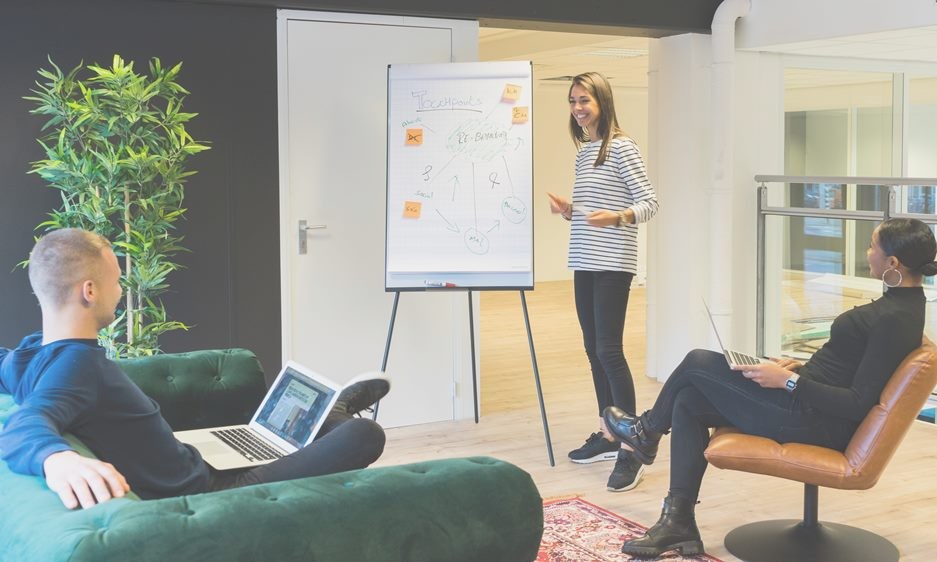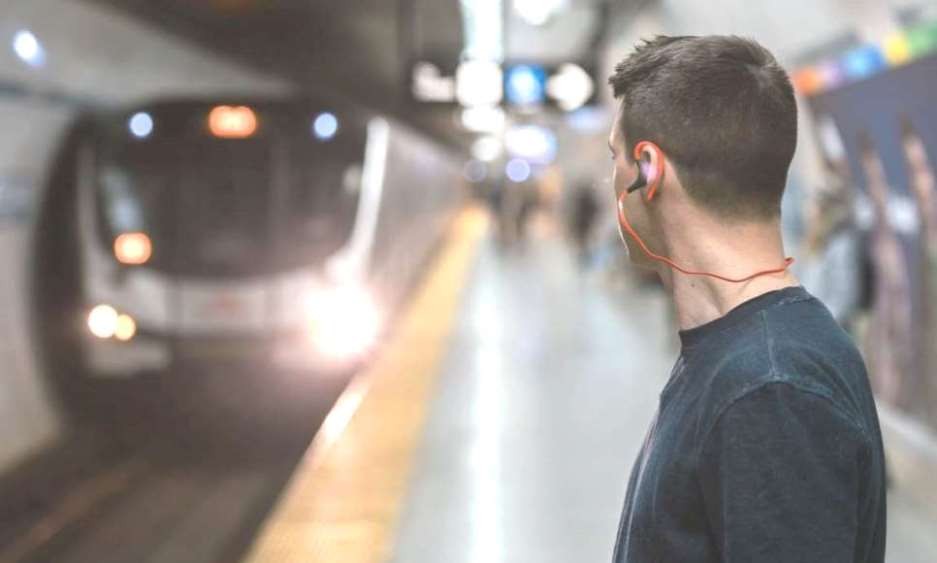One of the recurring themes in a lot of ‘what does the COVID-19 workplace look like’ pieces is ‘work from home, work from home, work from home.’
I work from home. I love working from home. I know lots of people who love it and lots of people who don’t like it at all. I’m also aware that lots of jobs that can’t be done entirely or even partially from home. So, let’s set aside working from home for a moment and talk about what the COVID-19 workplace looks like when it’s … well, at the workplace.
Well, it looks social distanced.

Yup, this is going to be part of the workplace workday long-term and there is no getting around it. On the assumption that we’re all operating to at least the WHO recommended standards (1 metre between people) or more (most places in the UK are working at a two-metre standard) – how do we do that?
- Change the layout. Perhaps the most obvious thing you can do to create more space between work areas is change seating and furniture arrangements. If there isn’t a way to get people the requisite distance apart, try placing them facing away from each other. I know it feels rude but honestly, everyone will understand.
- Change the schedule. Does everyone have to be in the office at the same time? It’s easier to keep people socially distanced if there aren’t as many in the office. You never know – you might have some night owls who prefer to start later in the day and some morning folks who relish the chance to start early and knock off sooner too.
- Avoid crowded or small areas. If taking the stairs instead of the lift is an option, that may be a better way to get around. It depends on how popular an idea it becomes in your office and how narrow/confined your stairwell is. Another pinch point people encounter during the workday – public transit. Encourage staff to walk or cycle to work if it can be done reasonably and safely (a business-backed incentive might be worth considering to further encourage this) as a way to avoid public transit. But additionally, flexibility in scheduling means employees might be able to use public transit when it is not quite so crowded (see change the schedule above).

- Meet smart. Things still need discussing and hashing out by groups of people – and if you have a conference room big enough to allow that while maintaining social distancing, go for it. Also, put a hand sanitizing station outside the door and go through the doorway one at a time a metre apart, please – doorways are pinch points. If you don’t have the ‘conference room of the gods’ that will allow such distancing, you could have the discussion out in the open but that might get irritating for everyone else. Try using the collaboration tools you would use if having the meeting remotely.
- Education and reminders. I know it’s hard to imagine forgetting about COVID-19, but it’s entirely possibly to be on ‘auto-pilot’ at some point during the day (I’m on auto-pilot until at least after the second cup of coffee) and falling into pre-COVID-19 habits so, reminders and signs about social distancing best practices at strategic points won’t hurt.
- Traffic flow control. This will obviously be dictated by the number of people in the office and the layout but depending on how much space there is between work areas or desks, you may want to implement a ‘one way’ system to prevent traffic jams as people try to stay apart the recommended metre or two
- Mail and deliveries. By now, we’ve probably all experienced the ‘no contact’ delivery at home – whether it’s a take-away or some item we’ve ordered online. That’s going to be something we see in the COVID-19 workplace as well. The mail room is going to see a lot of changes – both with incoming items and outgoing. Examine your mail/delivery processes carefully and adjust them so that social distancing can be maintained as much as possible.
- Facilities maintenance. Light bulbs need changing, problems need addressing. If that sort of thing is already happening out of hours – great. If not, look at shifting it. If there is work that must be done while people are in the office, make sure they have enough of a heads up to move away from the area before work starts.
- Limit outside visitors. If it can be done remotely, do so. If not, try and schedule only one meeting involving outside visitors at a time and make sure they are aware of the social distancing mechanisms you have in place at your location
- Review and adjust. It is worth reviewing your social distancing protocols regularly (with input from teams across the business) to see what is working, what isn’t working and how government guidelines might have changed.
Social distancing may seem like a pain, but it is the safest and best way forward for now. Each business will face unique challenges in implementing social distancing and I’ll be interested to see how those challenges are met and overcome as lockdown restrictions are eased and more of us head back to the workplace.

A version of this post was originally published on LinkedIn.
